The 2025 Volvo EX30 is several things all at once. The small electric crossover represents a new entry point to the brand; it’s one of the few affordable electric cars starting at $35,000; it makes an eco-conscious statement in a luxury leather world; and its dual-motor performance model fuels rallycross dreams.
The last bit might be the most surprising thing about Volvo’s newest vehicle: it’s a hoot to drive, especially on a frozen lake in the Swedish Lapland near the Arctic Circle. With 20-inch studded snow tires on both the dual-motor and single-motor EX30, Volvo’s return to a rear-wheel-drive car for the first time in 25 years doesn’t sacrifice its reputation for safety and safe handling.
A 2.3-mile loop track was cleared on a frozen lake, the surrounding birch and pine trees frosted in snow. The snow fell light but constant, the quality of light so flat that it was nearly impossible to discern the ashy ice track from its windswept boundaries. Red rubber sticks marked the slaloming apexes of a course that lacked even the shortest straight.
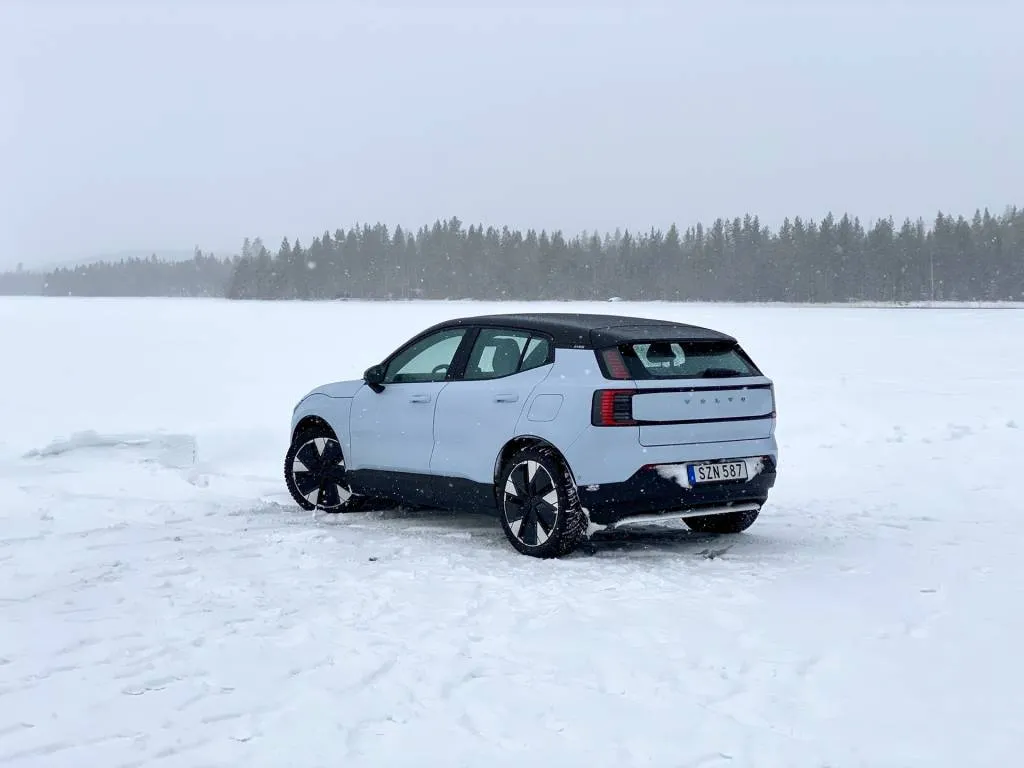
2025 Volvo EX30 RWD
The challenge while turning constantly was to stay on course at speeds of no more than about 37 mph; don’t hit the red sticks, don’t plow into a bank, don’t get stuck. It wasn’t so easy. Anyone who has laced up skates knows ice makes everything faster.
An adjacent slalom course highlighted more technical urgency: maintain the line on both the narrow and wide courses, slam on the brakes into the red-stick gate before a mass of sticks meant to represent a moose, whip around the moose, correct through the finish, nose forward. At 50 mph, it was an impossibility. Miss the moose, kill some sticks.
The point of all this? To test the limits of the motors and the traction control systems in Volvo’s newest, smallest car.
The takeaway? You don’t need all-wheel drive to have good grip and reassuring safety in the Volvo EX30.
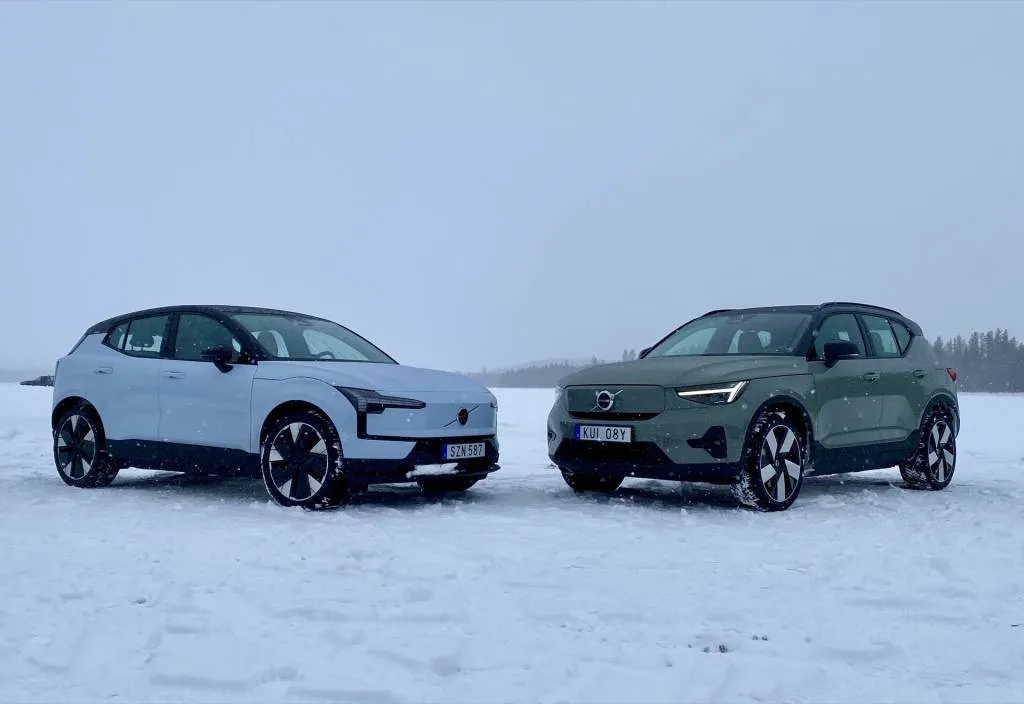
2025 Volvo EX30
EX30’s rear-wheel-drive triumphant return
For decades, front-wheel-drive cars have overtaken rear-drive cars as a safer, more practical, and more cost effective approach to single-axle power. The electric age has subverted that thinking.
The heaviest single element of the EX30—its 69-kwh battery pack—sits in the floor between the axles, creating a more even weight distribution and a lower center of gravity than a combustion car. With the steering and climate systems up front, a drive unit mounted at the rear axle balances the weight even more without the plowing when turning that’s common in FWD cars.
The difference between the RWD and AWD EX30 models largely comes down to software in the stability control unit. Some chassis adjustments to the spring rates and roll bars were necessary to account for the 282-pound weight difference (3,858 pounds for the EX30 RWD), but Volvo designed the EX30 to operate and react the same whether its dual- or single-motor.
The 200-kw rear motor makes 268 hp and 253 lb-ft of torque. Volvo claims it can hit 60 mph in 5.1 seconds on its way to a top speed of 112 mph. Not on ice. Even with the studded winter tires, the wheel slip from a stop effectively cut power to the accelerator until the stability control system determined it had a grip. It’s a lot of torque all at once. On wet country roads, the pert burst of power tapered off around 30 mph, but it was still sudden enough to get a giggle.
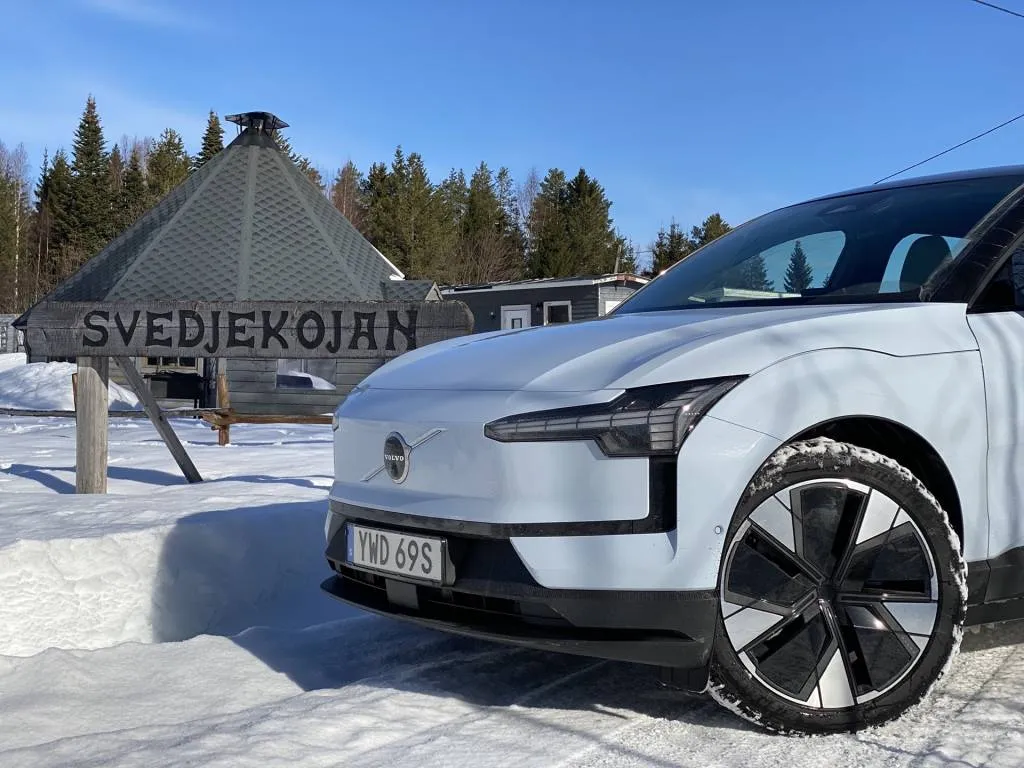
2025 Volvo EX30 RWD
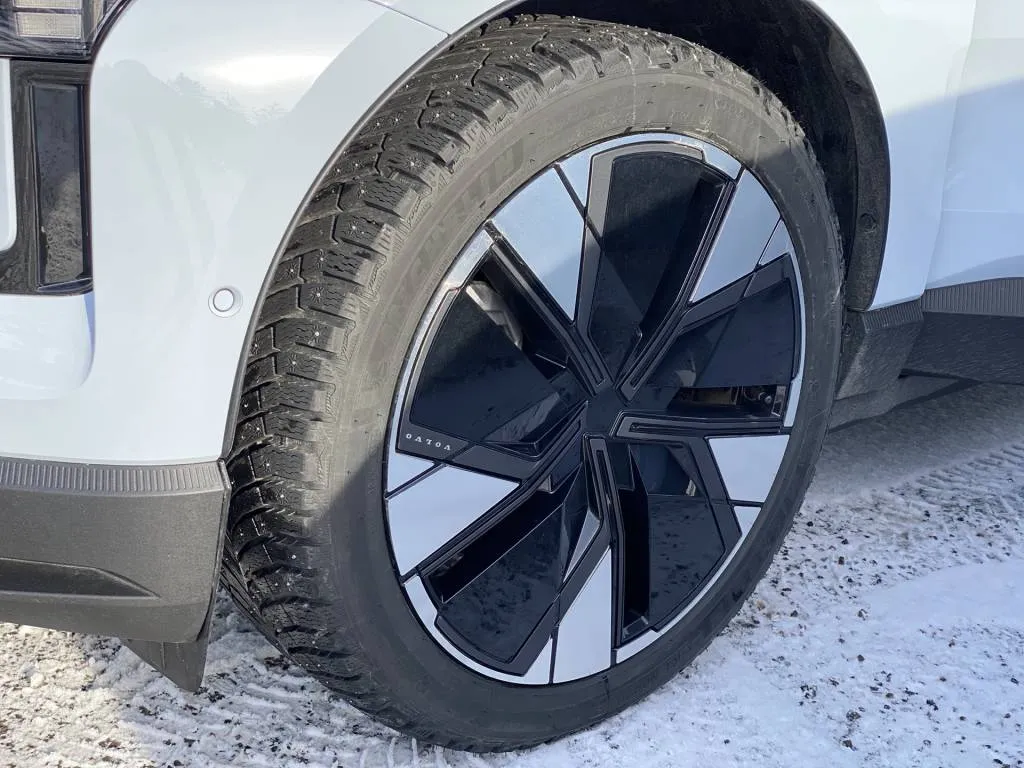
2025 Volvo EX30 RWD

2025 Volvo EX30
On the ice course, I played with turning on and off one-pedal driving, as well as turning the stability control on and off. It’s never fully off, because that’s the Volvo way. Even minimizing the stability control is meant not for performance fun but to dig yourself out of a snowbank or sticky situation demanding more traction. With it limited, the rear end slid out much more freely, unencumbered by anti-lock brake corrections. To keep it on line, it required a dance between the accelerator and the brake.
Even with one-pedal driving off, the regen brake system uses the motor, with the friction brake only coming on with a hard press of the brake pedal. A tap of the brake into a serpentine induced some rotation, then a stab of the accelerator carried it through and back around. The electronically assisted steering rack didn’t require much force, but it wasn’t overly sensitive. The flat top and bottom of the steering wheel gave it some presence in my hands, and it was one of the more pleasant surprises of the EX30 ice experience.
Too much of the brake, throttle, or steering greeted me with a snowy slide and no chance to pull out because of the dead throttle pedal. With ESC off, it gives you a bit more freedom. The snow that both defined and hid the track nearly matched the 7.0 inches of ground clearance on the EX30.
With one-pedal driving and ESC active, as most Volvo drivers would operate, it kept the hatchback in check without needing to do the brake tap. I could control the little SUV even at fun speeds mostly by getting off and on the accelerator pedal. The studded tires enabled remarkable control, and when we drove to the frozen lake through early morning snow, I never questioned or doubted the RWD traction on snow-drifted roads. This will be reassuring to EX30 drivers who don’t fantasize about a rallycross ice spectacle.
The downside was that changing the driving dynamics required several button presses in the EX30’s sole interface, a 12.3-inch touchscreen that even controls a small glove box door. It incorporates the instrument cluster, infotainment system, climate controls—all to keep the recycled material dash clean and spartan. To access the modes, press the car icon, press the settings icon, press the drive control submenu, and one more press gets you there. It’s best to leave that open when switching between modes.
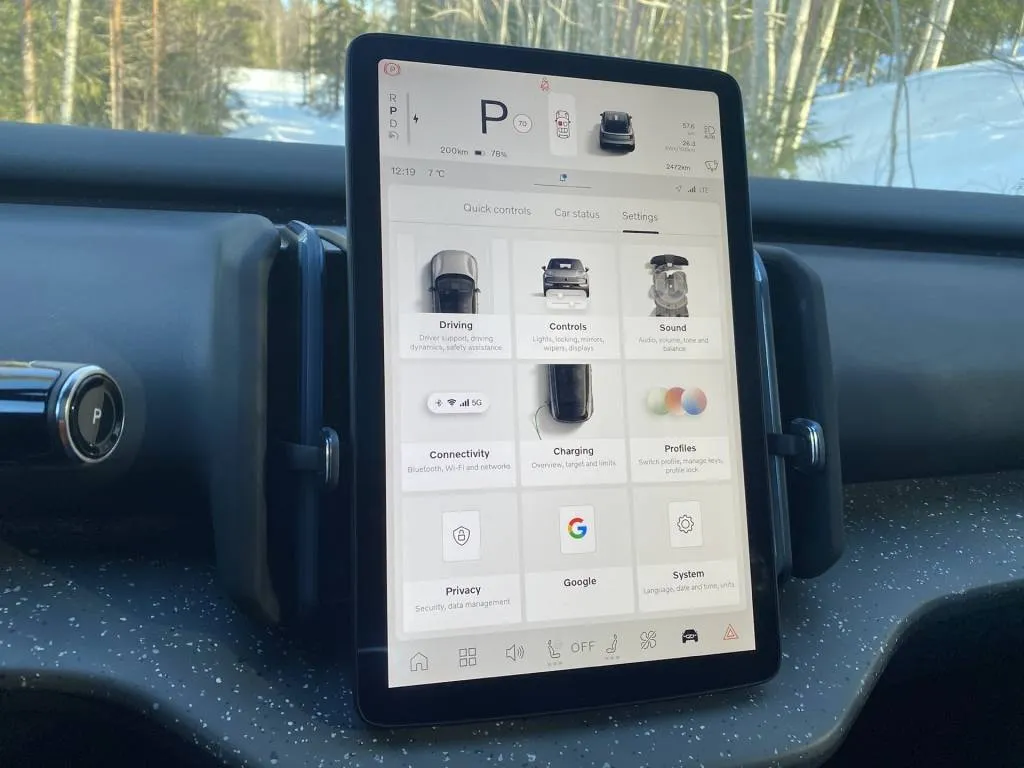
2025 Volvo EX30
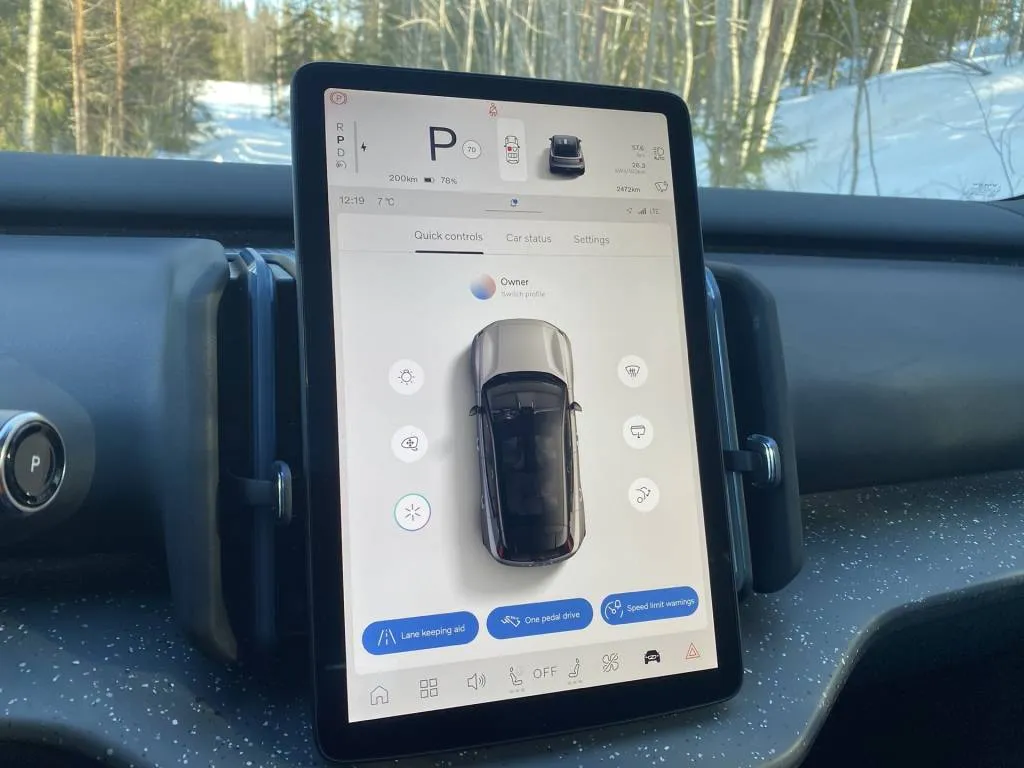
2025 Volvo EX30
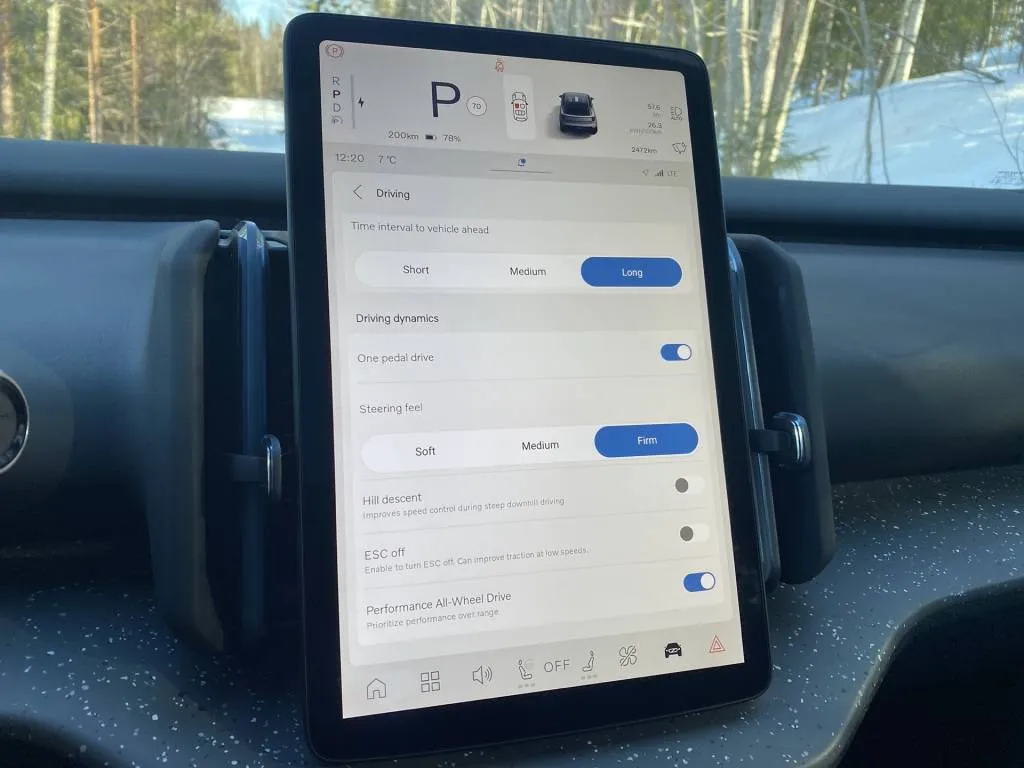
2025 Volvo EX30
The upside is that the next generation of Volvo’s Google built-in operating system and its layered display operates much more intuitively and visibly. Instead of the four-stack display that would require a push of a real button to bring up the climate controls, the HVAC always sticks on the bottom bar.
Keeping costs down can be pretty after all. Volvo offers four different interior themes, or “decors”. Breeze uses recycled window frames in a speckled dash that reminded me of the cafeteria countertops from my gradeschool. I preferred Mist for the eco vibe, with its wool-like upholstery and fibrous dash and door panels made of flax.
Even with the single digital interface, the cost-cutting is subtle on the interior. The console can slide out from the armrest to access the cupholders, and at the edge of the armrest is a single module that controls the door locks and windows, instead of putting a switch on each door. The power seat controls consist of one knob on the seat bottom, and pressing the button within the knob activates three different functions, such as adjusting the lumbar, or separately, raising or lowering or sliding the seat.
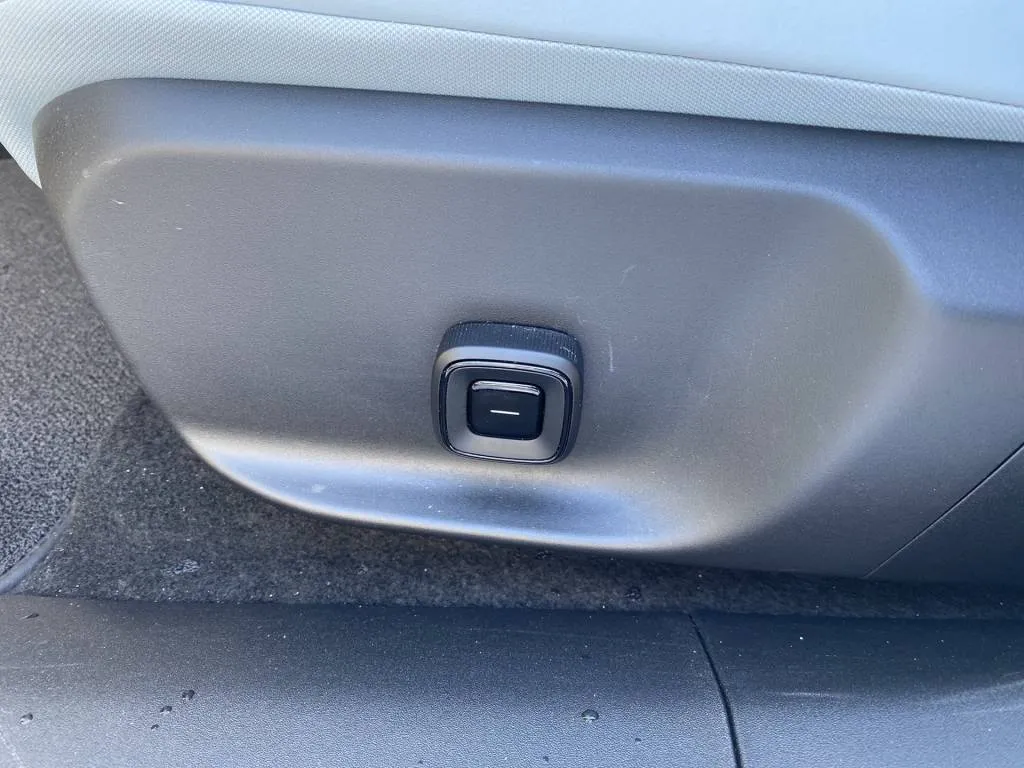
2025 Volvo EX30
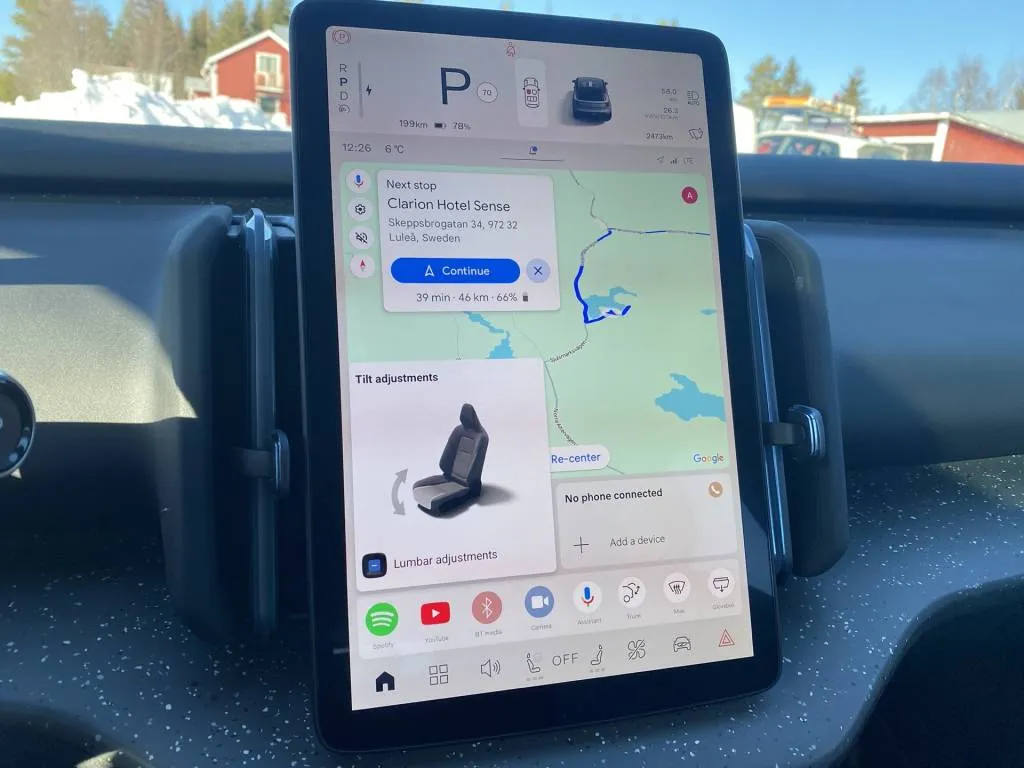
2025 Volvo EX30

2025 Volvo EX30
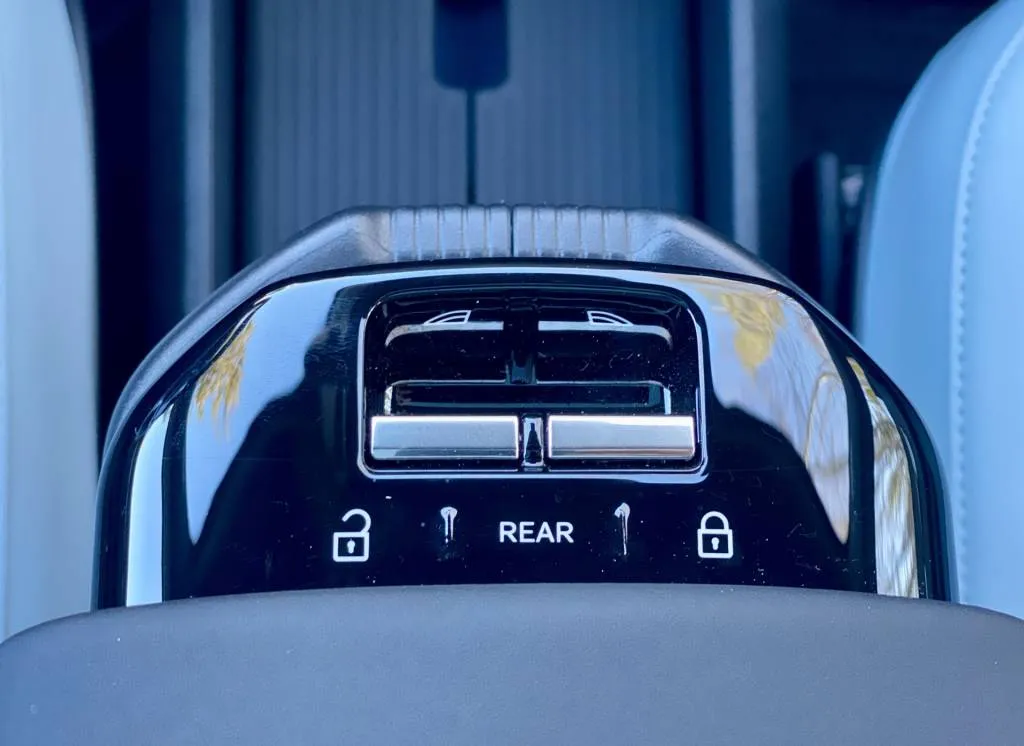
2025 Volvo EX30
The EX30 dual-motor difference
Another button in the touchscreen appears in the dual-motor model: Performance mode. It locks the 200-kw rear motor with the 115-kw front motor so the full 422 hp and 400 lb-ft is always available. Without it, it takes a beat for the system to detect slip or to acknowledge the pedal is floored and to engage the front motor.
With it on, Volvo quotes a 0-60 mph time of 3.4 seconds. It’s a gut-dropper on open roads and an unusual surge of power from a Volvo.
On the ice, the extra power and greater grip had an instant effect. Off the line, there wasn’t the slip and pause of the RWD model. It nosed confidently ahead and it was easier to maintain speed on the course’s intended line. It turned the safety exercise into a gauntlet of fun. I would spend the $6,000 extra just for that.
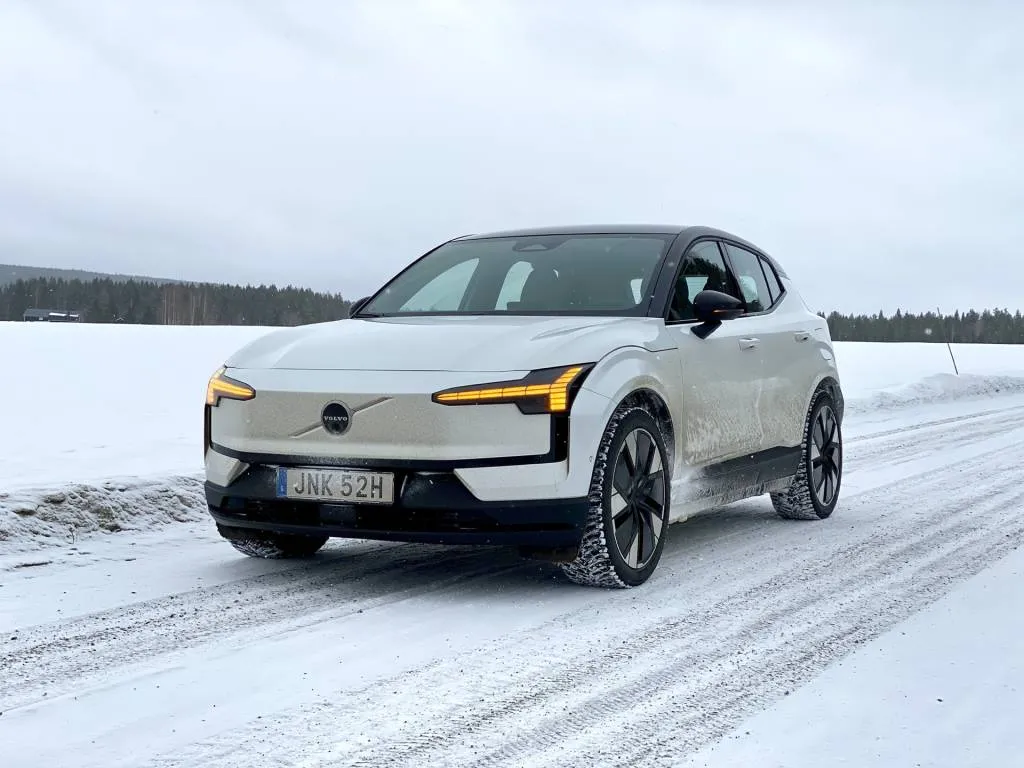
2025 Volvo EX30
But I wouldn’t recommend it to the normal EX30 shopper, who might be a young couple eventually growing into a family or a downsizing empty nester. The single-motor-RWD unit does such a good job in terms of traction that I’m not sure the dual-motor AWD unit is the safer play. It is, by virtue of the extra weight and the quicker responses, but if you lived in a snowy climate, chances are you’re putting snow tires on any car, and that might have a bigger impact on grip than the extra motor.
The dual-motor is the fun play.
Size matters: EX30 vs XC40
At the event, Volvo had a dual-motor version of the 2024 XC40 Recharge, which will be renamed the EX40 for the 2025 model year in North America. The name change aligns with Volvo’s global branding and drops the “Recharge” confusion; Recharge models will exclusively be plug-in hybrids now.
For 2024, Volvo added a rear-wheel-drive option to the XC40, but in back-to-back testing the agility of the EX30 made the EX40 feel like a large crossover. It’s not.
At 174.8 inches, it’s 8.1 inches longer than the EX30 with a wheelbase that’s 2.1 inches longer. It’s 1.4 inches wider, 3.8 inches taller, and has significantly more rear legroom and cargo space with the seats down (46.9 cubic feet vs 31.9 in the EX30).
There’s enough room under the cargo cover in the EX30 for four rollaboards, and a hidden floor gives it more depth, but it’s tight back there. Likewise, 6-footers won’t want to sit in back for long, with just 32.9 inches of legroom, though headroom is decent. A longer and more rugged variant arrives next year in the EX30 Cross Country.
The EX40 dual-motor is about 500 pounds heavier, too. You feel all of it. By comparison it felt cumbersome and ponderous to negotiate the slalom course. It’s older, too, and I suspect its multi-energy platform that can be used with a gas engine and plug-in hybrid hurts its handling characteristics. The EX30 rides on a dedicated electric vehicle platform developed in partnership with parent company Geely and used in other EVs by Zeekr and Polestar.
The EX30 is a fun-sized Volvo, but that hasn’t served many automakers in North America.
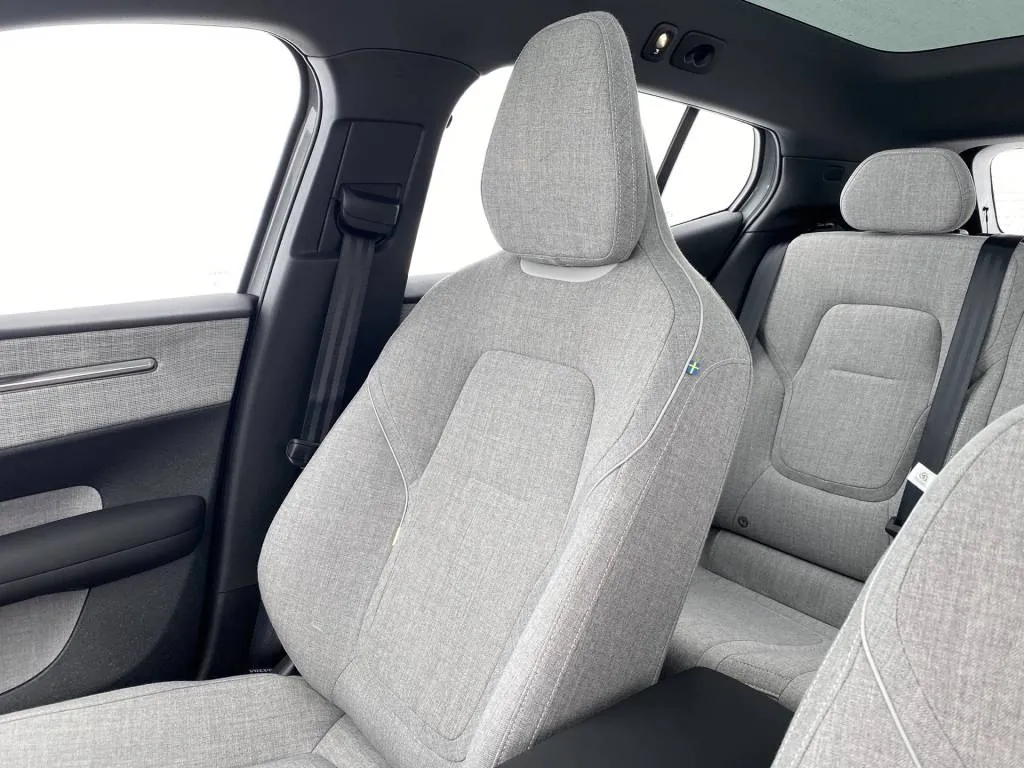
2025 Volvo EX30
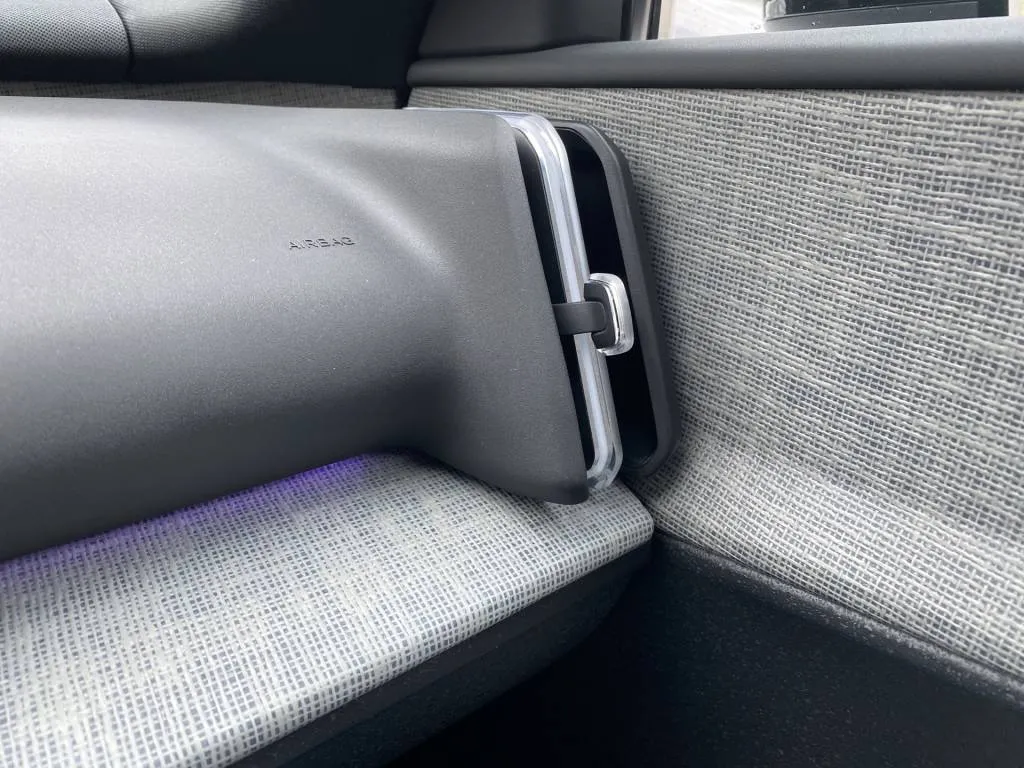
2025 Volvo EX30
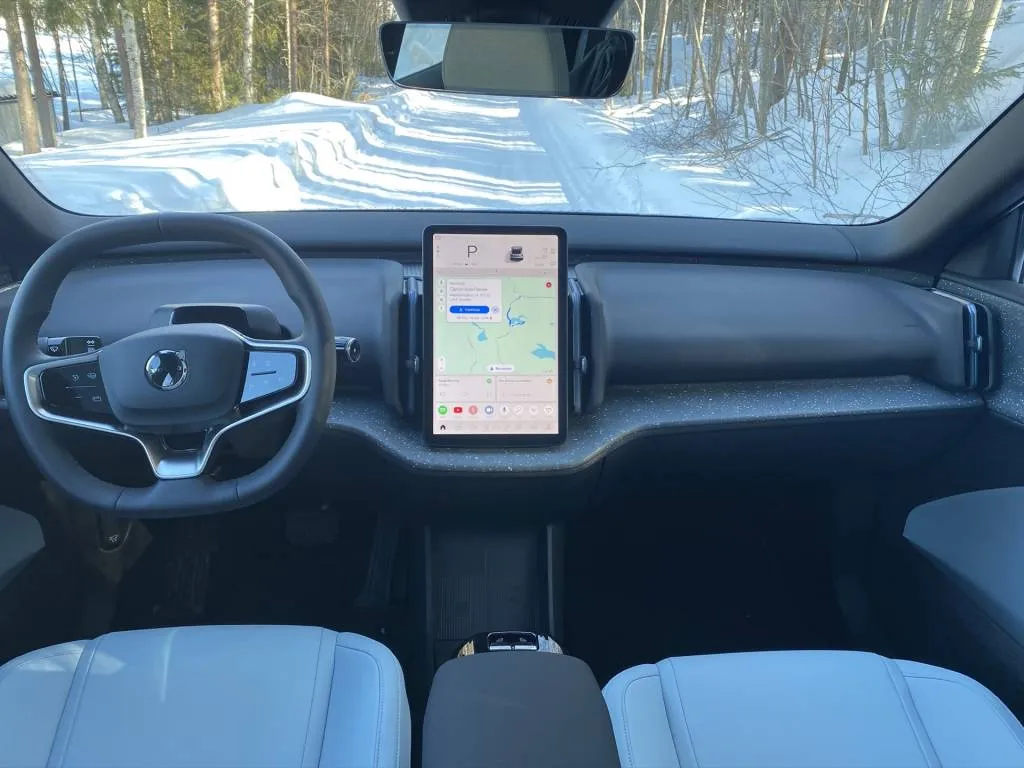
2025 Volvo EX30
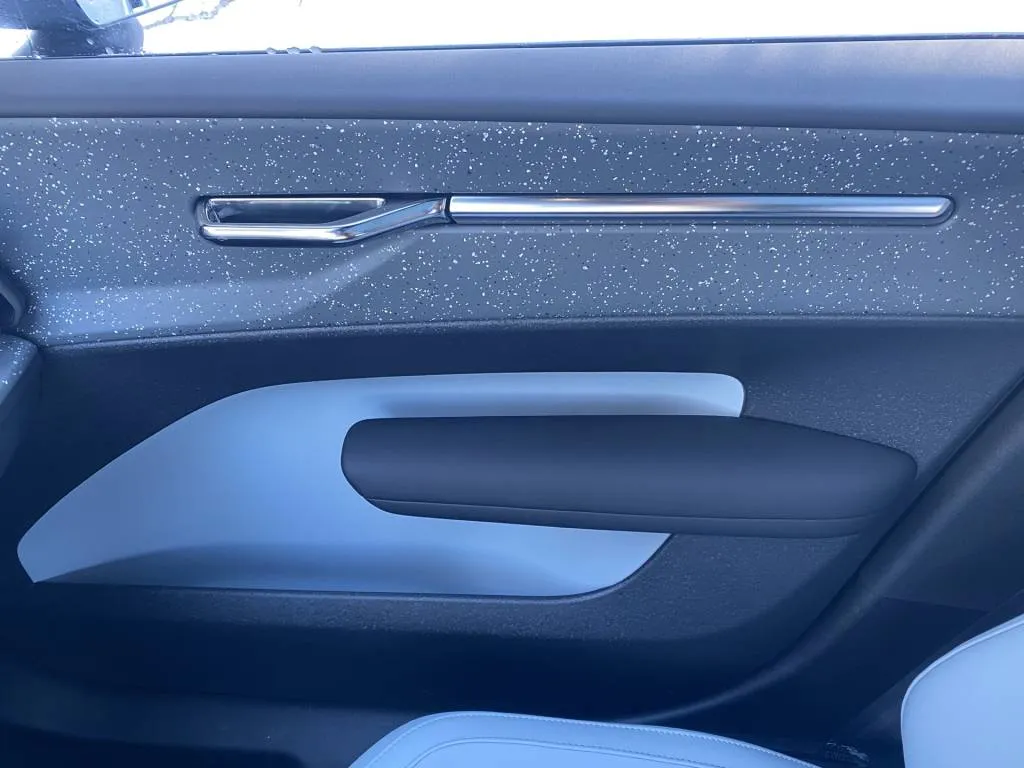
2025 Volvo EX30
Price matters: The $6,000 question
Volvo’s big bet on its new entry-level SUV answers the new question: Who’s going to sell an affordable electric car? Chevy rested the Bolt EV for a year, the Nissan Leaf is too old, and every EV maker appears to be chasing Tesla’s price cuts to the Model Y.
The 2025 EX30 rear-wheel-drive base Core model starts at $36,245, with destination. Both the RWD and AWD models are sold in Plus ($40,195) and Ultra ($41,895) grades. Adding $6,000 for the Dual-Motor performance model puts the price on par with any number of electric vehicles, most of them larger inside.
The estimated dual-motor range of 265 miles is in line with other EVs with a battery pack below 70 kwh, as is a DC fast-charge estimate of 26.5 minutes from 10-80% at 153 kw. Made in China for now and Belgium next year, it won’t qualify for the $7,500 tax credit.
Yet, its price appeals to the oft-overlooked demographics of the downsized and the urban, and it makes the Model Y look like it has indigestion. The EX30 wears its eco-consciousness on its recycled sleeve, yet it retains the safety and styling hallmarks of a Volvo. Its fun-sized packaging and handling give it something Volvo hasn’t had for a while.
Volvo paid for travel expenses for Motor Authority to present this first drive of the 2025 EX30.









